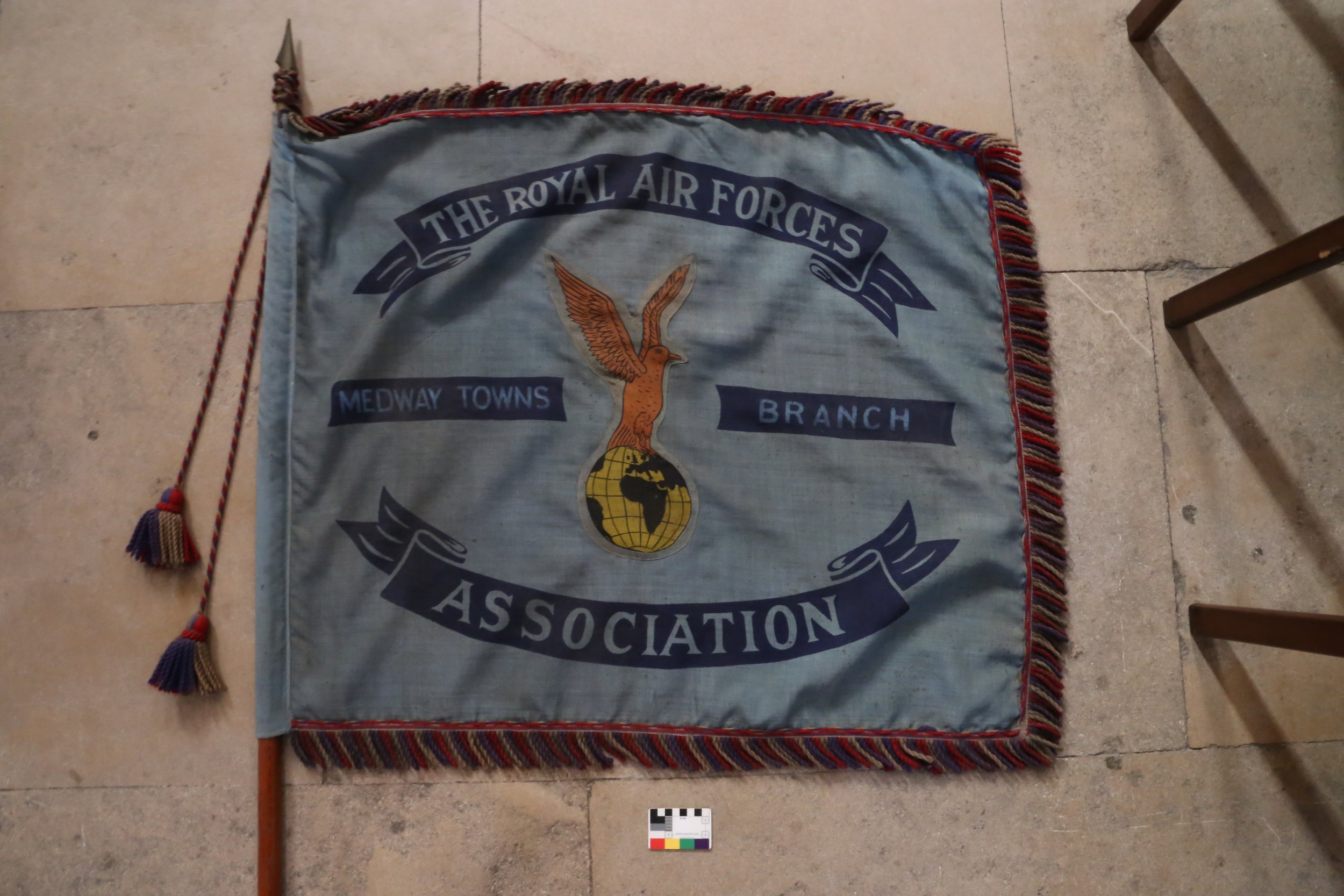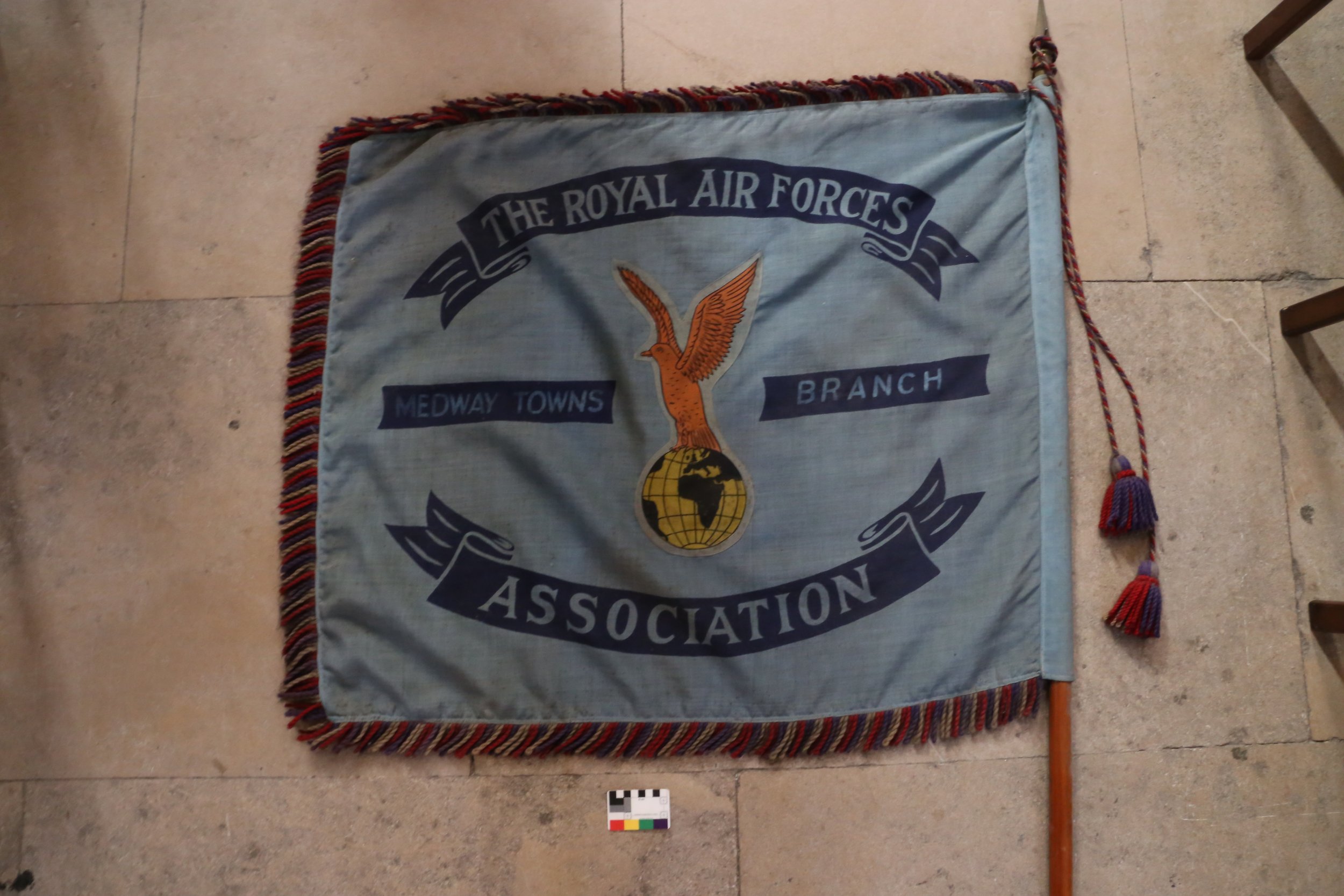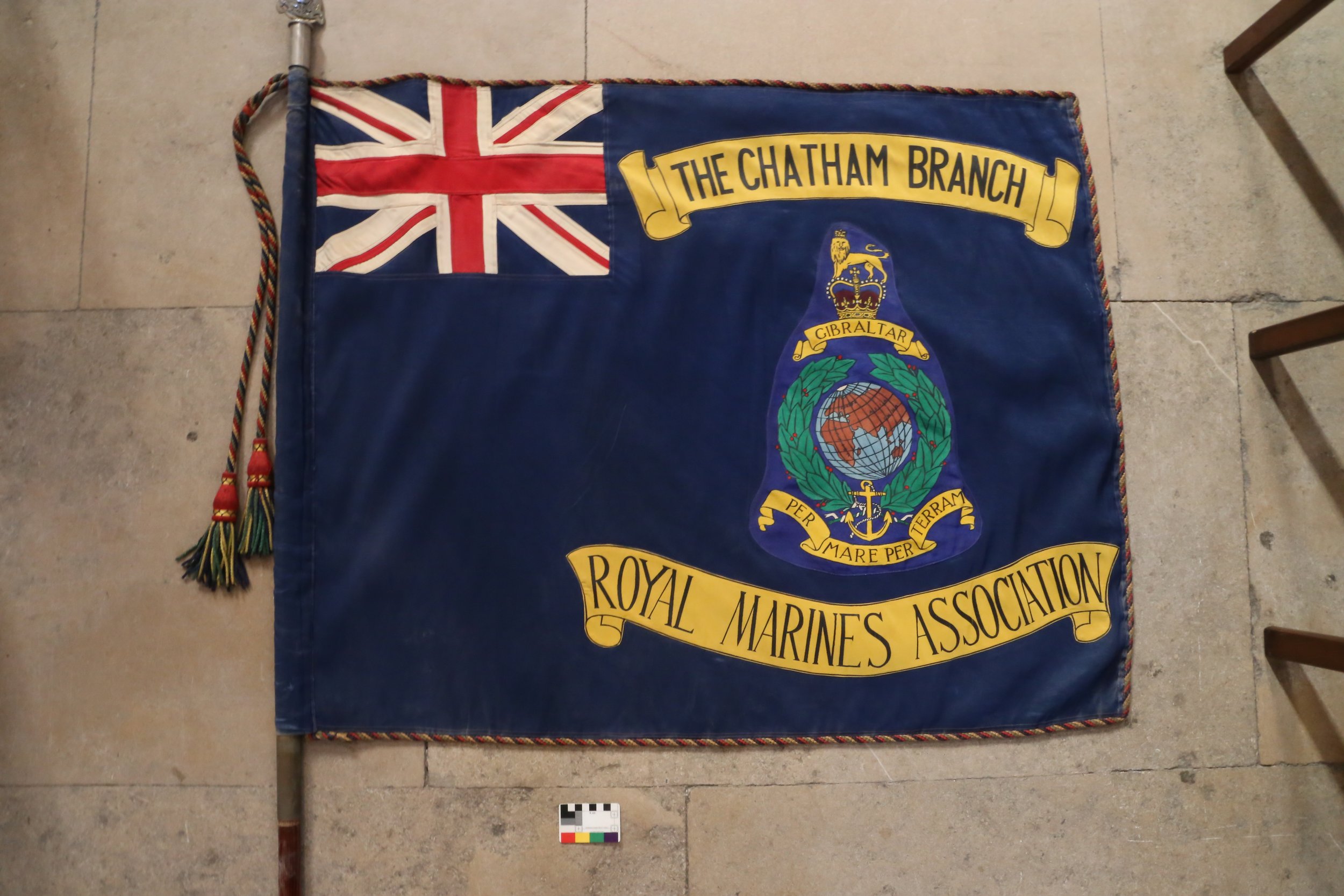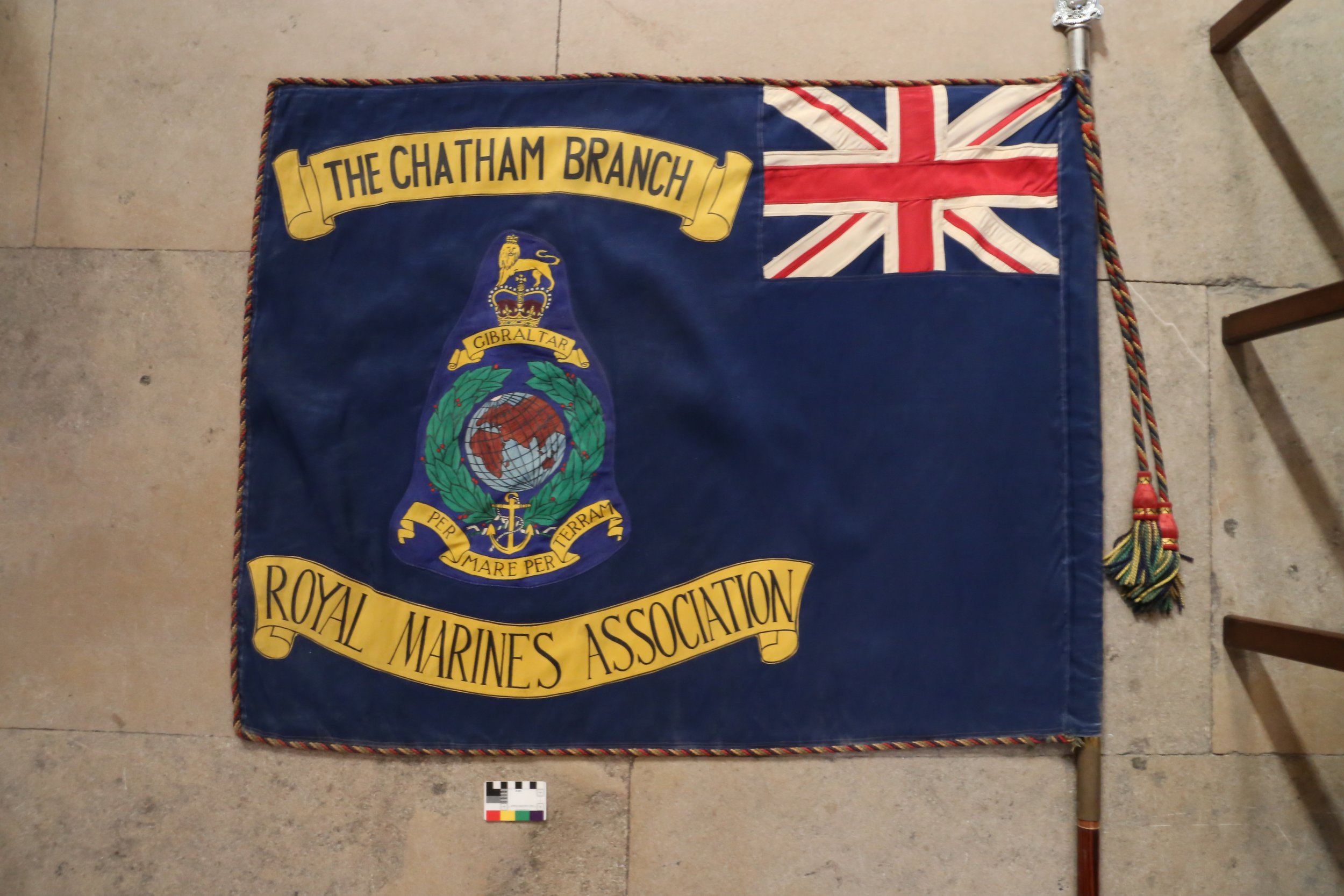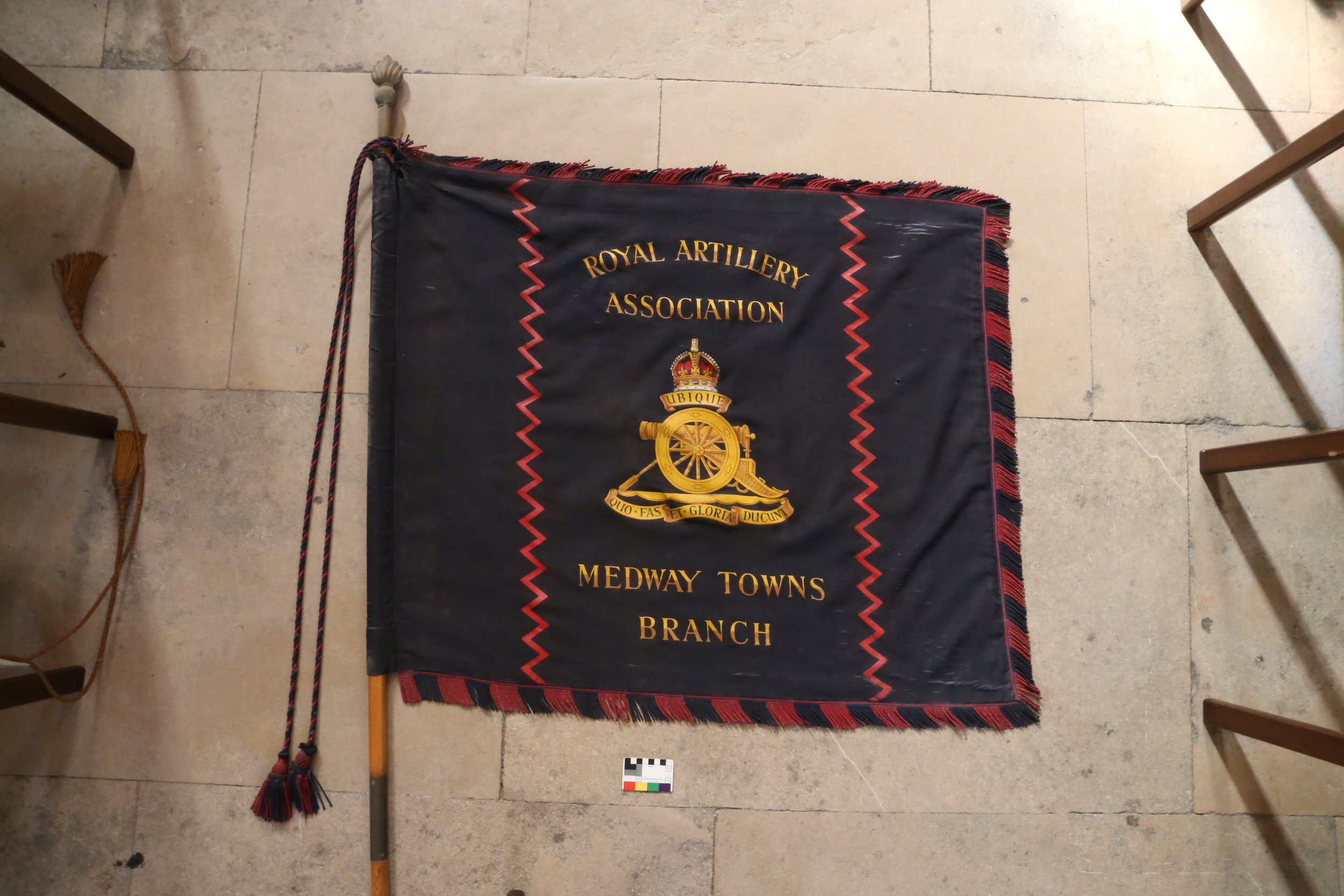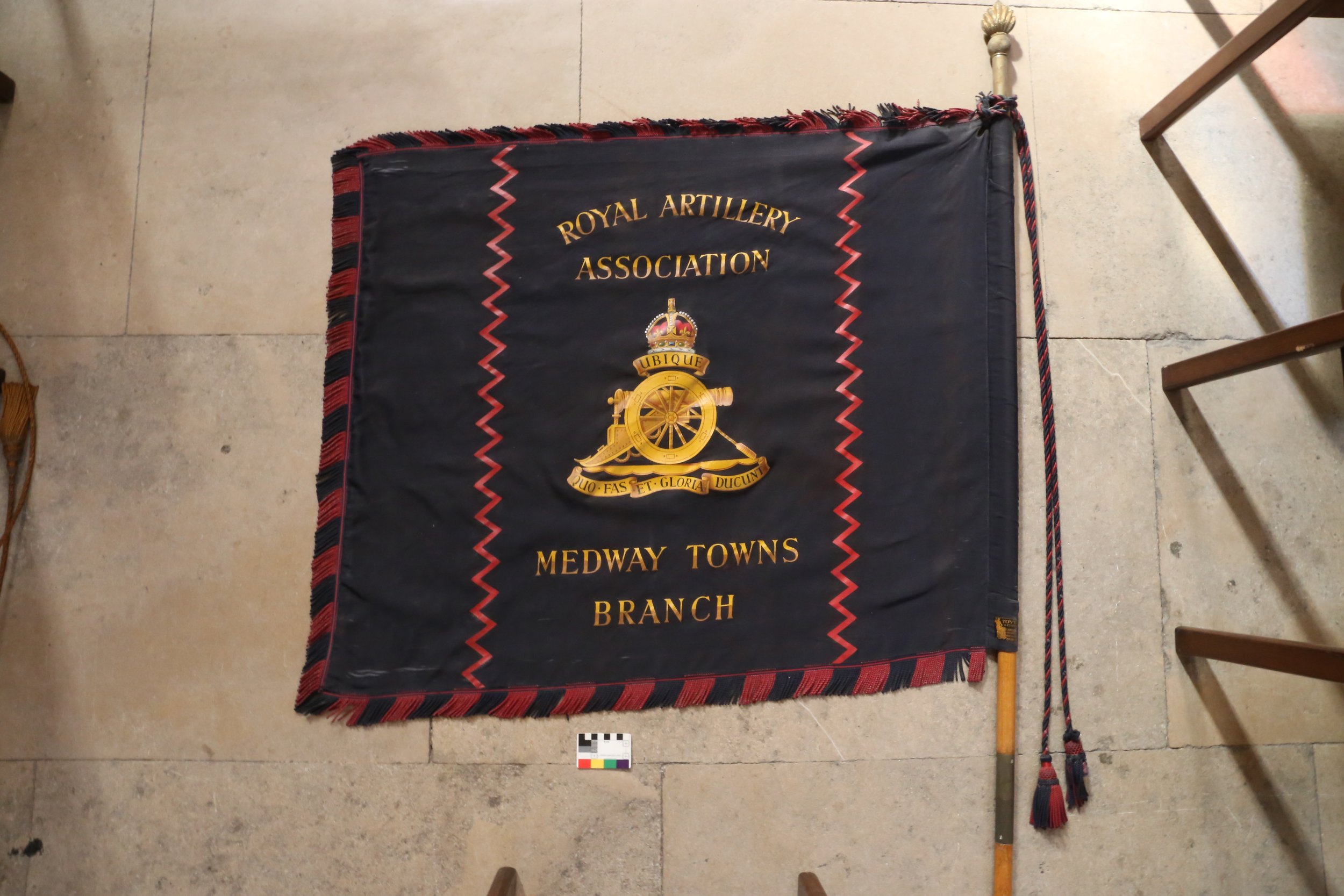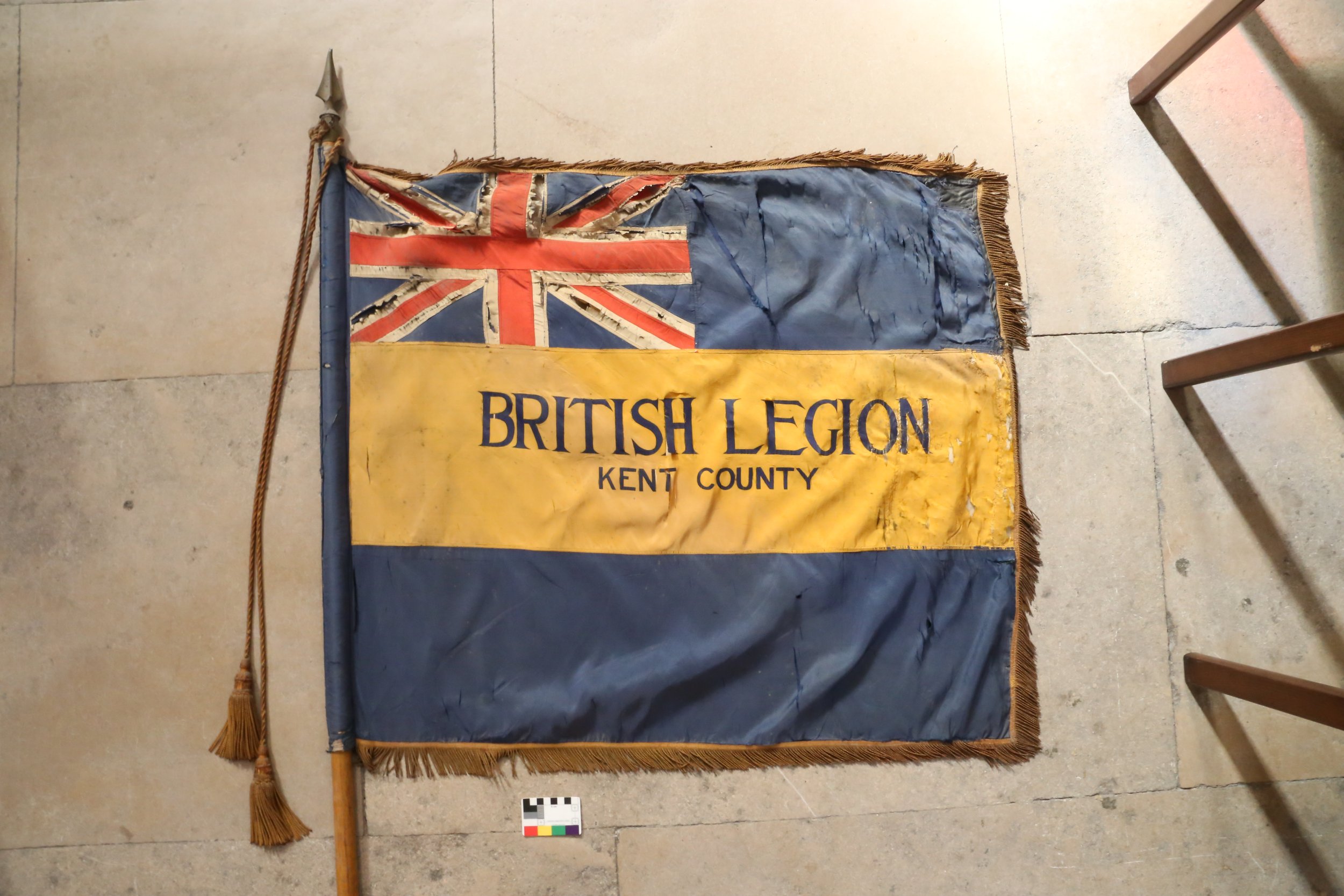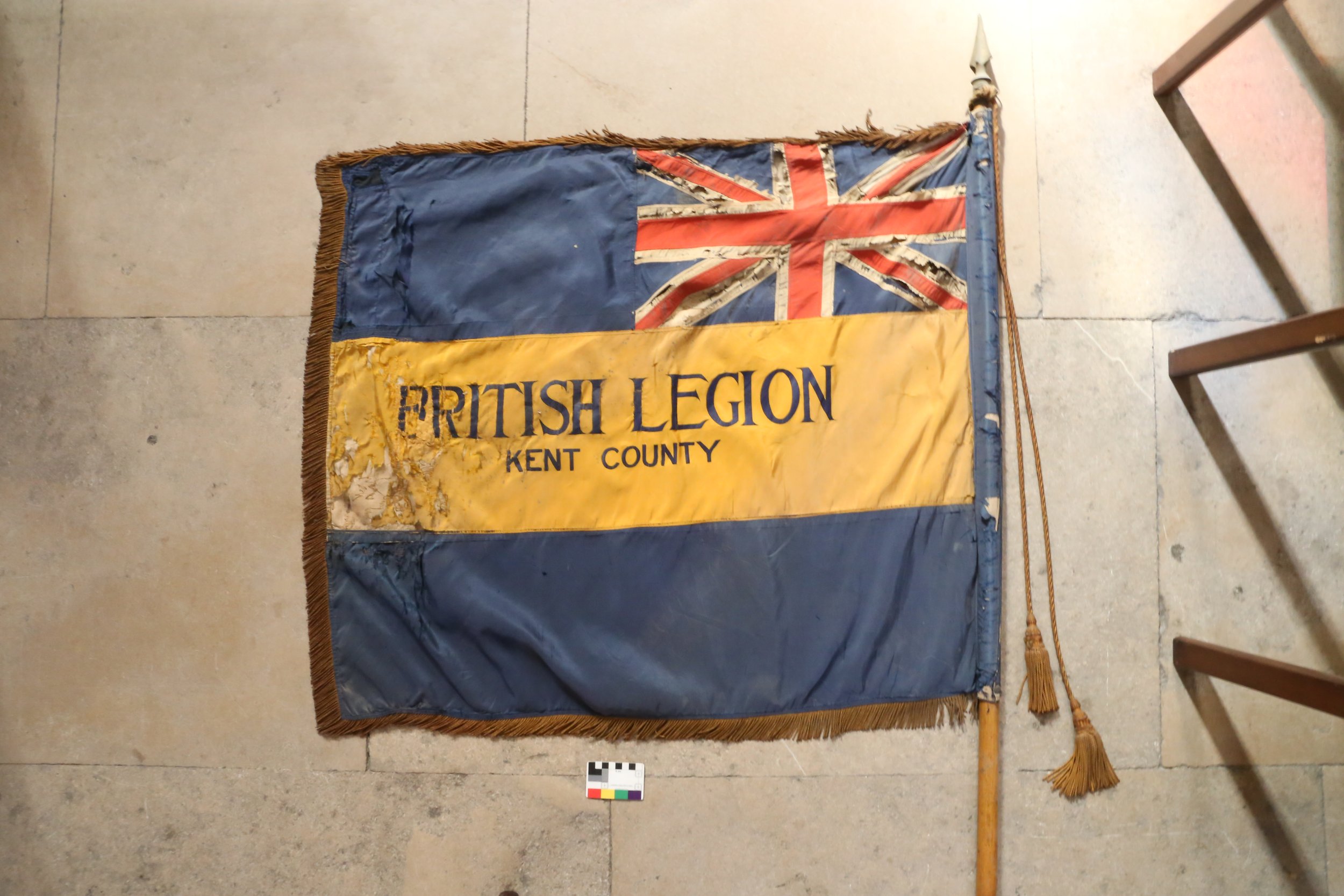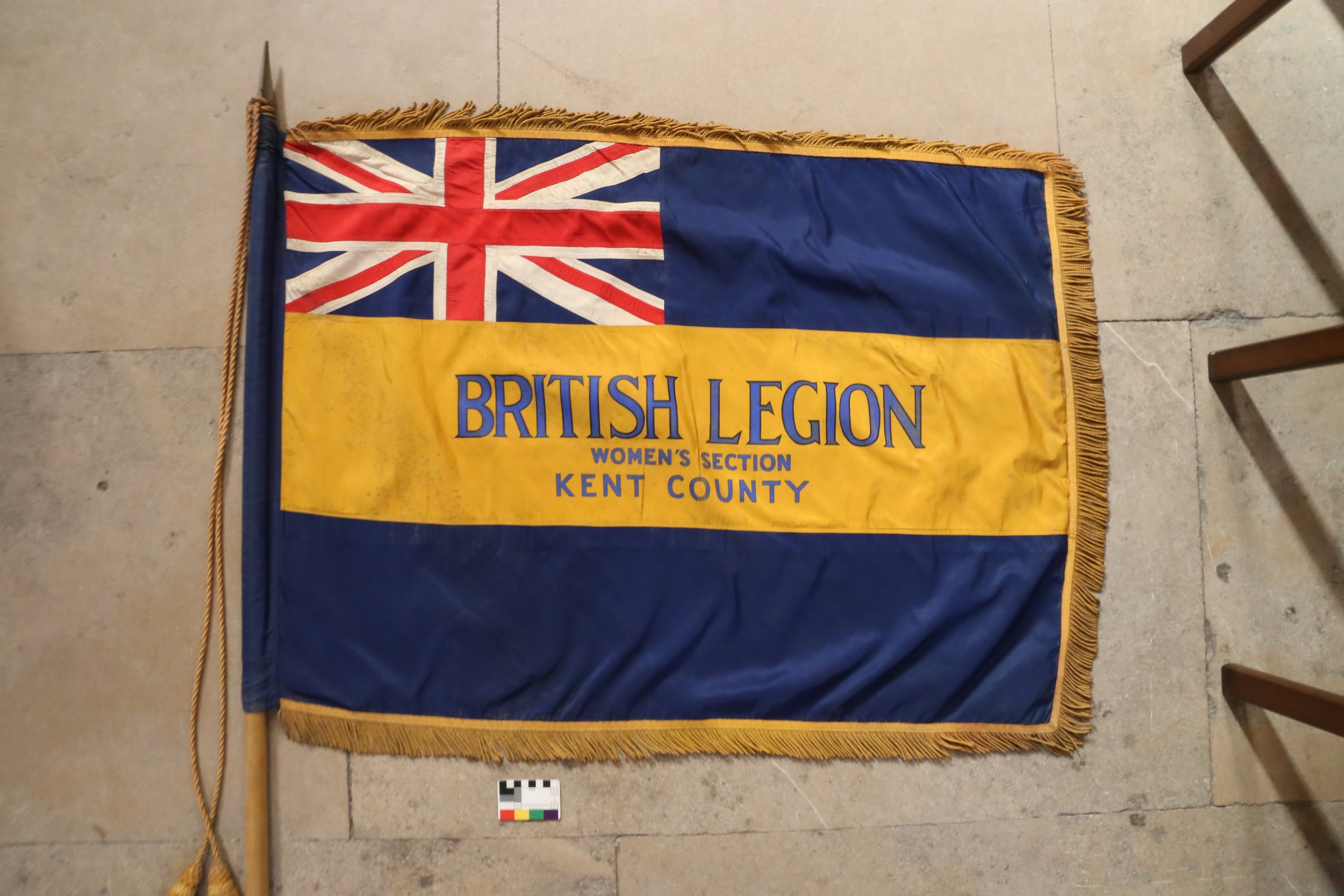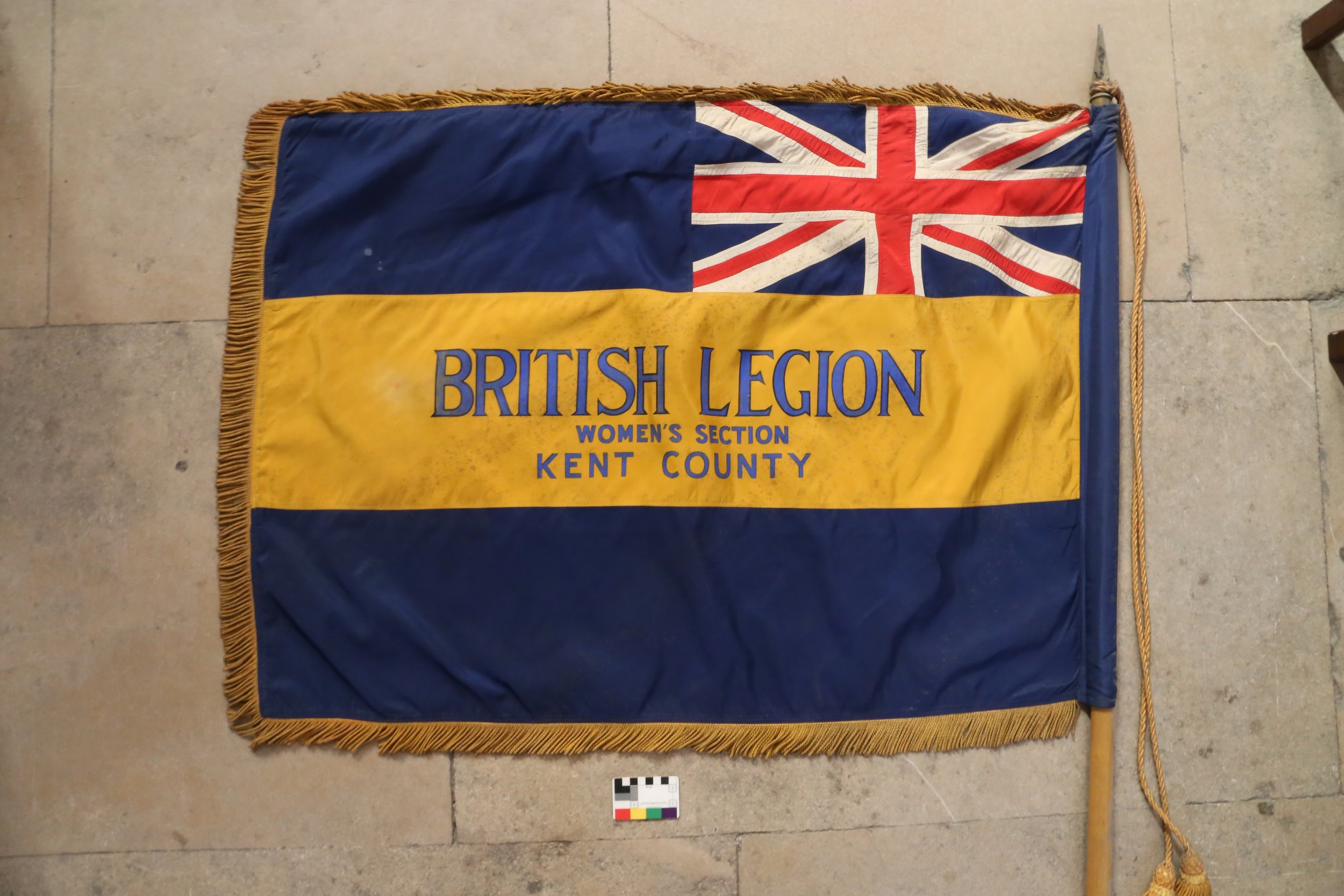Military colours and standards, 20th century
/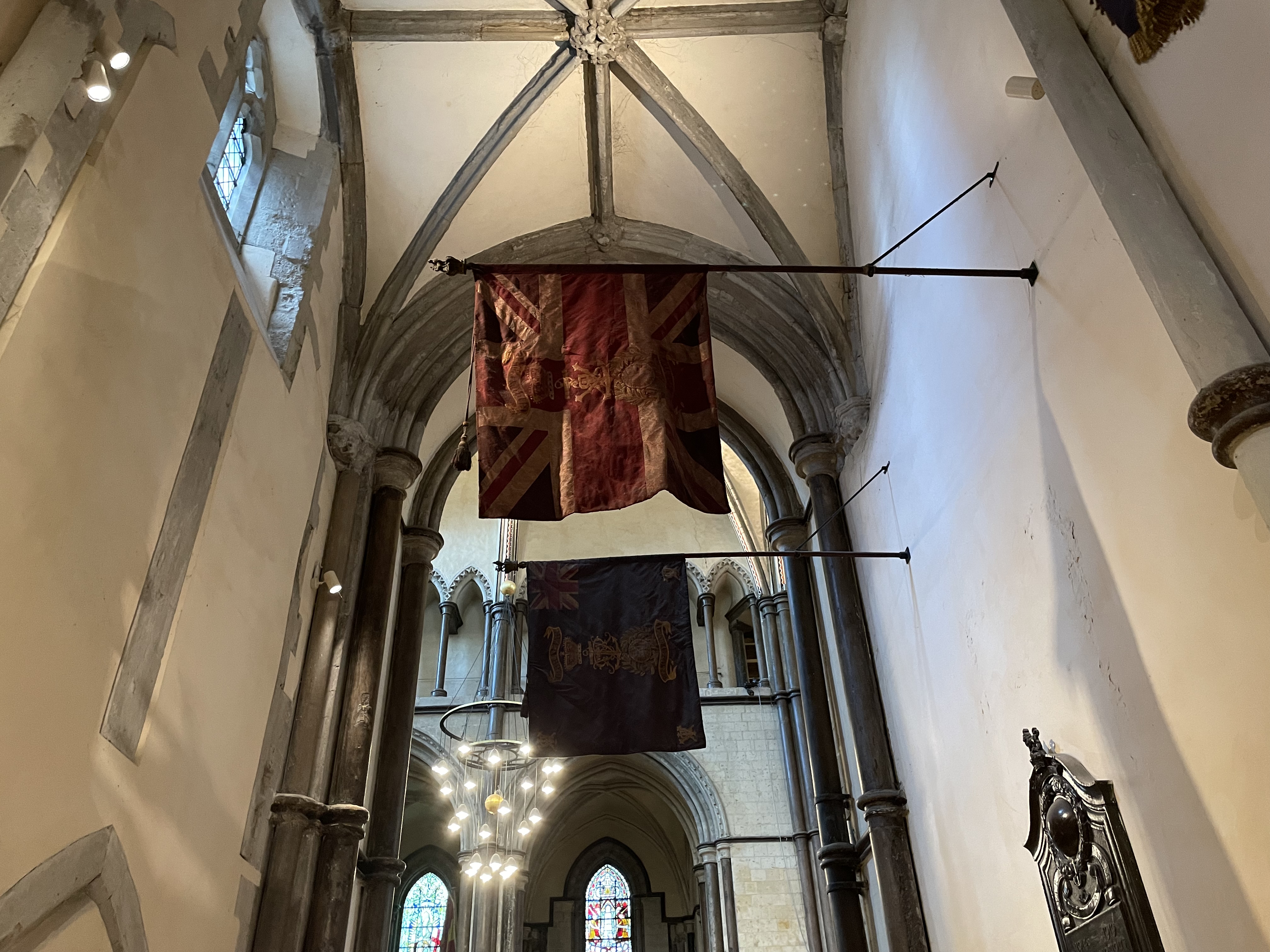
Military colours and standards
20th century
August 21, 1983
The collection of military colours and standards have hung in the North Quire Aisle for much of the last century. The Royal Marines Turning of the Page ceremony takes place at the Books of Memory in the North Quire Aisle each week.
High in the north quire aisle beyond the Pilgrim Steps hang the fading colours of the Chatham Division of the Royal Marines, sad reminders of the famous Corps which first paraded under the castle walls in 1708, and was quartered in the city for the next seventy years until it moved to Chatham. For nearly two hundred and fifty years the Royal Marines were part of the life of the Medway Towns until, in 1950 the Chatham Division was closed down. On Whit Sunday of that same year its colours were delivered into the hands of the Dean and Chapter for safe keeping and at a moving ceremony were laid-up for ever in the cathedral which had seen the sea-soldiers go out to fight in every quarter of the globe.
The colours, the Sovereign's Colour and the Divisional Colour, now ninety years old, were presented to the Chatham Division by H.R.H. the Duke of Edinburgh at a ceremony on the Great Lines (themselves now under threat) on 2nd June 1896. They were never borne in action, although they were carried by a Royal Marine Light Infantry battalion in France for a short time after the 1918 Armistice.
When the colours came to their final resting place in the Cathedral, the Dean, the Very Red Thomas Crick, a former Chaplain of the Fleet, expressed the wish that one day a future Dean might have the honour of handing them back. Most of those present knew in their hearts that this was a vain hope, and old men who had served nearly all their life in the Corps were seen to weep as the colours passed for the last time.
Why should these pieces of embroidered silk raise such emotions? Since time immemorial armies have carried standards into battle. The Roman eagles were borne throughout the empire, and one recalls that it was the standard bearer of the 10th legion who called on the hesitant soldiers not to disgrace the eagle when, fearful of the waves and the fearsome-looking Britons on the shore, they failed to jump from the ships into the sea at Caesar's first invasion of Britain in B.C.55. At Senlac Hill in 1066 it was to the standard of King Harold that the house-carles rallied in a last desperate stand against the Norman invader. Today British regiments, with certain exceptions, carry two colours - the Sovereign's and the Regimental, the latter displaying the regiment's badge and battle honours. In former times they were carried into battle, where they served as an inspiration to the men who fought under them, and as a rallying point if the regiment became dispersed in the smoke and heat of the engagement. They embodied the spirit of the regiment, and such was the reverence in which they were held, men performed outstanding deeds of heroism, and even gave their lives, to prevent them falling into the hands of the enemy. After the disaster at Isandhlwana in the Zulu War of 1879, when a battalion of the 24th Foot was annihilated and two officers were killed in an attempt to save the colours, Queen Victoria decreed that colours should no longer be taken into action.
Trooping the Colour, a ceremony carried out on the Sovereign's official birthday, had its origin in the days when the colours were 'trooped' or carried down the ranks of the paraded regiment before being 'lodged' or placed in safe custody.
Roy Trett
Standard of the Royal Marines' Association laid up Autumn 1991
King's and Regimental Colours of Chatham Division, Royal Marines - North Quire Aisle, 1896. Presented to the Chatham Division by the Duke of Edinburgh, 1896. Laid up May 1951.
Three standards- North Quire Transept. Presented to the 166 and 308 (City of Rochester) Heavy Anti-Aircraft Batteries, Royal Artillery, Territorial Army, by the City of Rochester in 1938. Laid up in the Cathedral in May 1948.
Three standards of Kent County Royal British Legion and Kent County Royal British Legion, Women's Section.
The Guild of Embroiderers are proud to care for over 100 ecclesiastical vestments and textile treasures.

